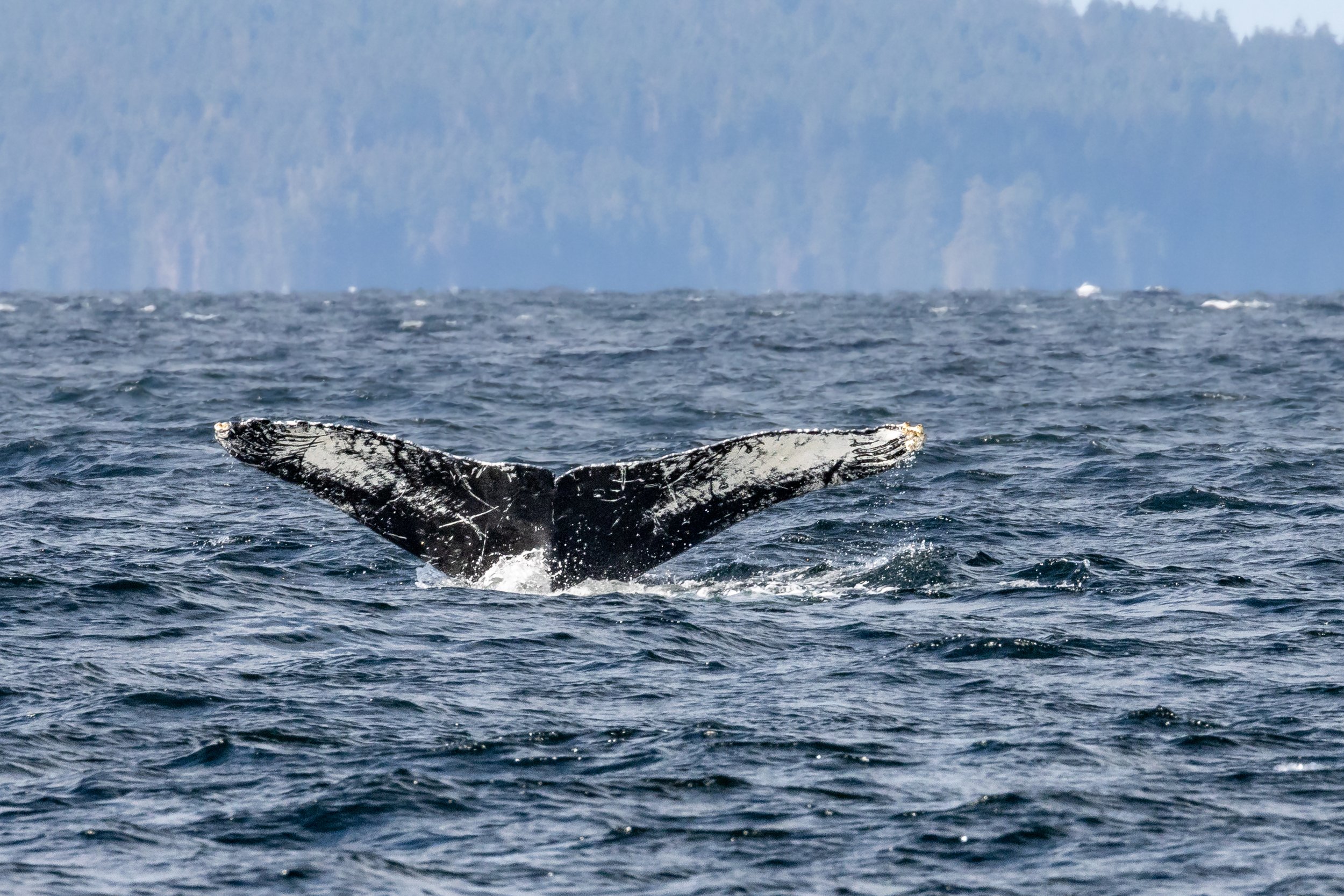October 22nd - Scratchy, Nova, and Bullet
Seasonal October weather seems to be here to stay! Our Humpbacks are slowly moving south, but we were still able to find a group of 3 hanging out near Porlier Pass off Valdez Island.
Scratchy (KEY0011), Nova (BCY1178), and Bullet (KEX0004) were milling about before they started travelling north. Scratchy is someone we haven’t seen yet this year, though it’s fairly easy to see how they got their name. They are covered in plenty of scratches, including what appear to be rake marks from orca. Many of our humpbacks have these markings as a result of orca predation on humpbacks. Our orca typically prey on small marine mammals like seals and sea lions, though from time to time they get the itch to go humpback hunting. Typically it is the calves or very old whales that are at the most risk, and to our knowledge, there has never been a successful humpback predation event in the Salish Sea. Humpbacks are often too large to bother with and well-fed enough in our waters that they put up too much of a fight for the orca to be too interested in. This doesn’t stop them from trying from time to time though. Can you spot the rake marks on the corners of Scratchy’s tail below?
Both Nova and Bullet are confirmed Hawaii whales, while Scratchy has yet to be matched to a breeding ground. We also know that Nova is a confirmed male and is 4 years old this year, while Bullet is a female and at least 8 years old, given that they were first seen in 2015 without a mother present, meaning they were at least a year old at the time. Bullet returned last year with a calf, and hopefully, she will return next year with one as well.
While this group was mostly foraging and travelling, they did treat us to a single cartwheel! It’s always exciting to see such large and powerful animals display their strength. A cartwheel is when a humpback will flip its tail out of the water in a large arch, often creating quite a large splash of water.
In a few of the photos, you can see the whales are practically on top of each other. A few times they were so close it looked like one may collide with the other in front as they dove. Humpbacks are often very close to each other, having little concept of “personal space”, whales are very tactile animals and physical touch seems to play a huge part in their social activities.
Enjoy the photos of our whales and wildlife from the tours, taken by marine naturalists Aly Kohlman and Vanessa Vereschahen.
Scratchy (KEY0011) Photo by Aly Kohlman
Nova (BCY1178) Photo by Aly Kohlman
Nova (BCY1178) Photo by Aly Kohlman
Scratchy (KEY0011) Photo by Aly Kohlman
Photo by Aly Kohlman
Scratchy (KEY0011) Photo by Aly Kohlman
Photo by Aly Kohlman
Scratchy (KEY0011) Photo by Aly Kohlman
Photo by Aly Kohlman
Photo by Aly Kohlman
Photo by Aly Kohlman
Nova (BCY1178) Photo by Aly Kohlman
Photo by Aly Kohlman
Photo by Aly Kohlman
Photo by Aly Kohlman
Photo by Aly Kohlman
Bullet (KEX0004) Photo by Aly Kohlman
Photo by Aly Kohlman
Nova (BCY1178) Photo by Aly Kohlman
Photo by Aly Kohlman
Photo by Aly Kohlman
Photo by Aly Kohlman
Photo by Vanessa Vereschahen
Photo by Vanessa Vereschahen
Bullet (KEX0004) Photo by Vanessa Vereschahen
Photo by Vanessa Vereschahen
Photo by Vanessa Vereschahen
Photo by Vanessa Vereschahen
Photo by Vanessa Vereschahen
Photo by Vanessa Vereschahen
Photo by Vanessa Vereschahen
Photo by Vanessa Vereschahen
Photo by Vanessa Vereschahen

































